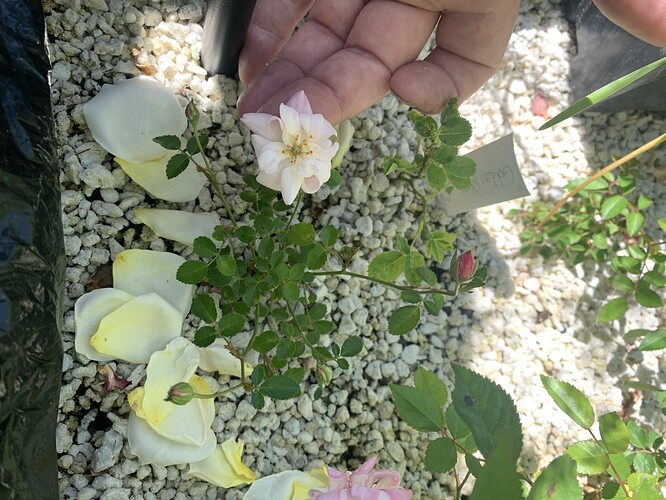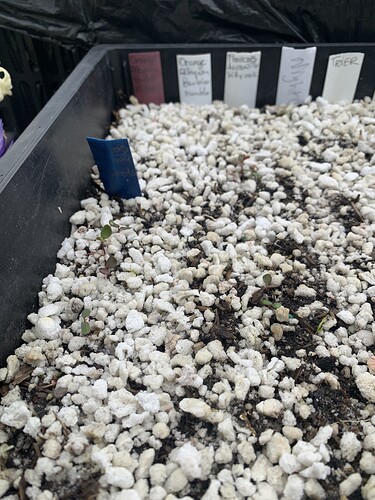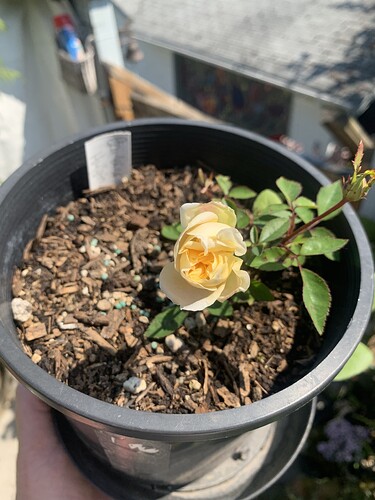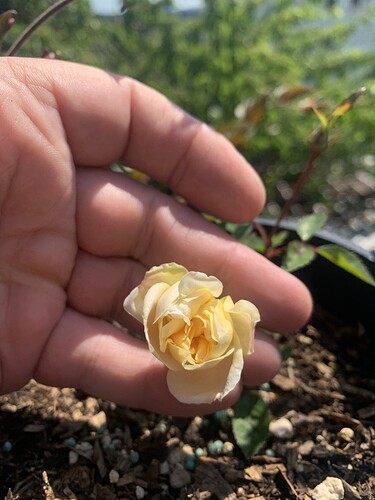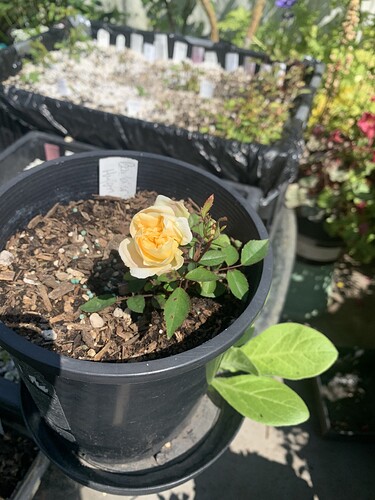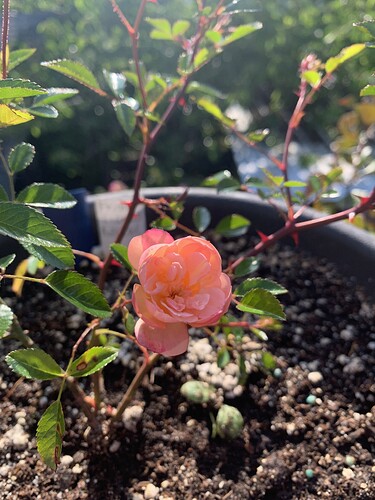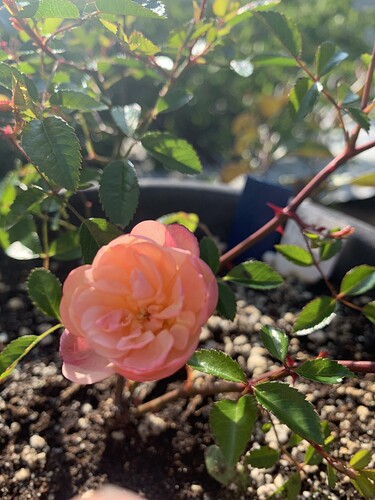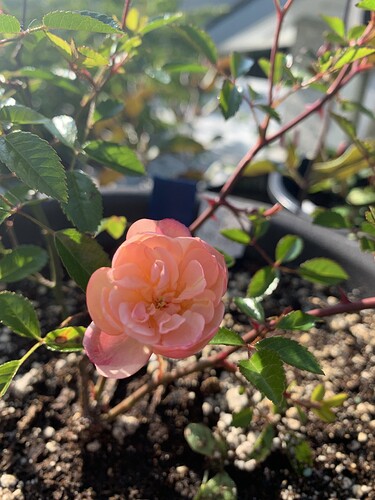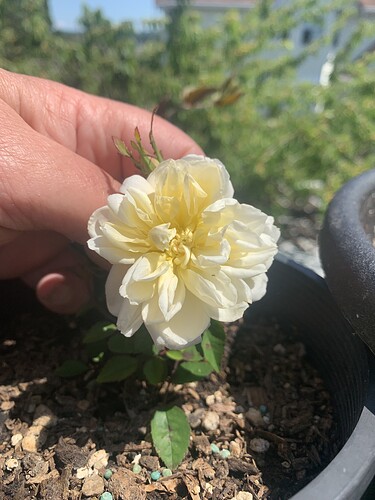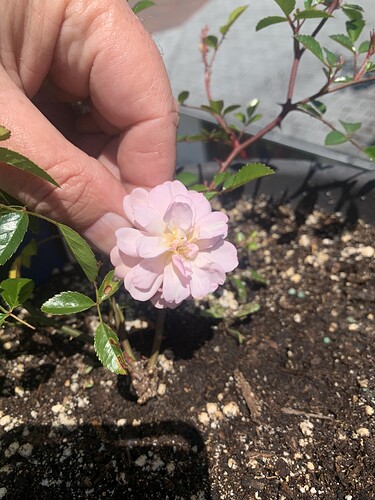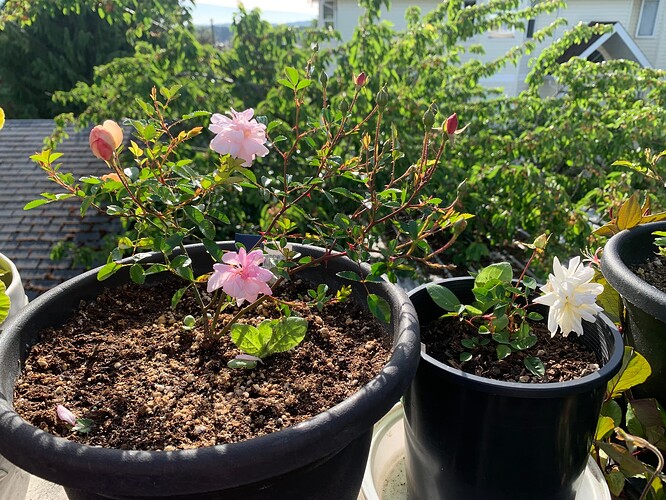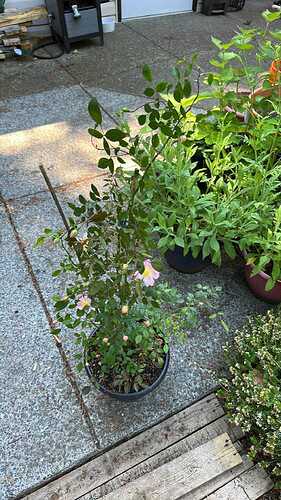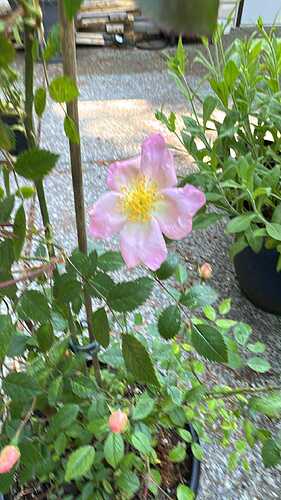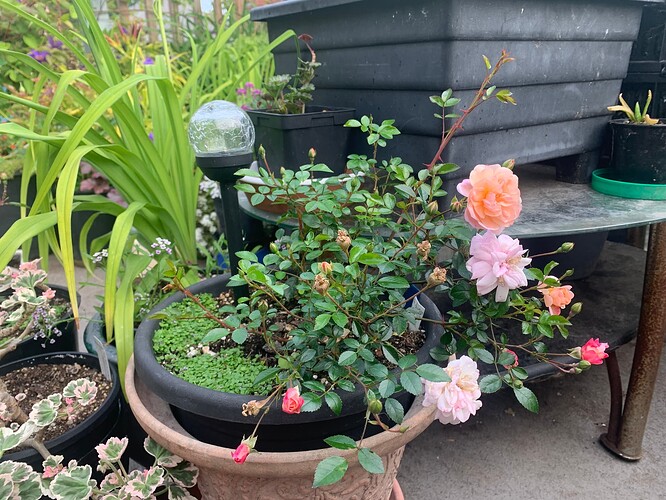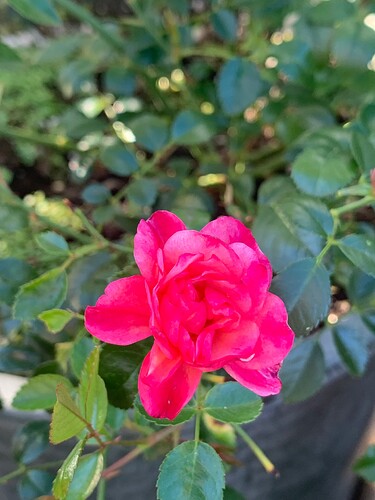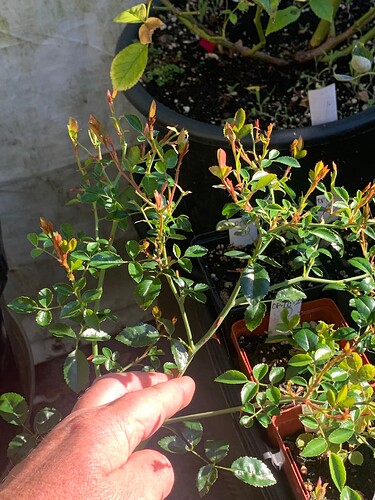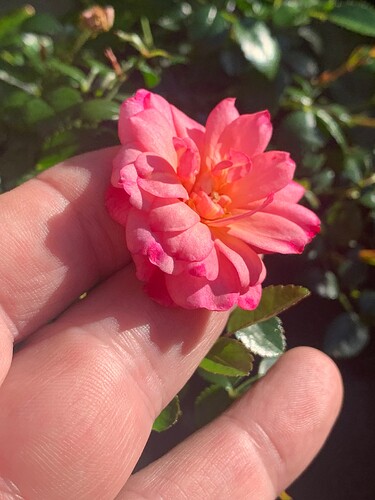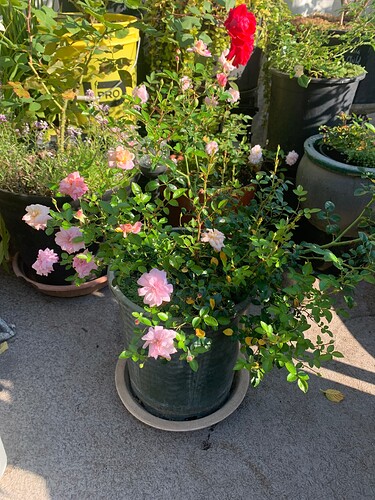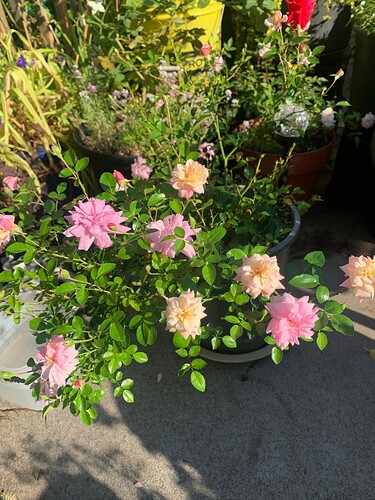One of my biggest surprises is this seedling from an OP hip of a Barbier rambler that HMF helped me ID as ‘François Juranville’. I was surprised to see juvenile bloom, and then even more surprised when it shot out several new basal growths with buds at the tips! First blossom was a blowsy, pale, peach-pink swirl of maybe 15-20 petals. Second showed up deeper in colour (it’s not a stretch to say orangish), and rather cupped at first.
At what point do we start playing favourites, and if now, what can I do to avoid jinxing it?
Fertile ramblers that have remontant parents can certainly produce everblooming, even dwarf shrubs.
If you like it enough, you could try propagating it as soon as it has enough material for a cutting or two. It should root very easily with that background.
Stefan
A couple blocks away from my place is a lovely old house with this rather orange, loosely-double, once-blooming rose that I’m sure is from the Barbier family of lucieae-ramblers. I haven’t got a firm ID for it, but I figured I’d grab a few hips and see what comes from it. Pretty sure it’s the only rose in the yard, so chances are they are selfings.
I’m curious why you’re convinced it’s a Barbier rambler. There were other hybridizers working with the luciae/wichurana family, several of them here in the US, which is much closer to your location than Barbier in France. What about it convinces you it’s from Barbier?
Mark
For one, the research I did to ID the rambler I bought as ‘Leontine Gervais’. HMF makes clear the mess of misidentification around the handful of peachy-orange ramblers from Barbier:
My rose flowers are 8-10cm in diameter, so must be ‘François Juranville’, and certainly matches well with the description and photos.
Secondly, Vancouver Island’s climate is distinctly Mediterranean, a number of Barbier ramblers are readily available here, and they do beautifully. Many even keep some green foliage right through our wet winters.
Lastly, the ones bred on the east coast of the United States are simply not as common here, and those of orange-tints are exceedingly rare to begin with.
My best guess at this point is that it is ‘Auguste Gervais’.
No germinations as yet from the “Alleyway Barbier”, but several popping up from my own ‘François Juranville’.
Also, I separated the seed-sizes this year, to see if the dwarf repeaters come from the wee seeds and the lankier siblings w/out precocious bloom are from the larger seeds. So far, about four or five seedlings from each size seed have appeared.
Stay tooned, kids!
One of the keepers from last year, with no notes on its tag. Maybe it didn’t bloom last year? Dunno.
But this year, it is yellow, double, very dwarf (for now?), and seems to be fathered by ‘Trier’, from the fringed stipules. Diploid yellow, repeat-bloomer, and possibly some hardiness? Let’s see how it grows this summer and I’ll root a few cuttings to send to friends in less-than-Coastal climates.
Season 2, and it’s looking even nicer than before! Good colour, acceptable form, and a delightful wee bush of rather Polyantha-style.
The little orange cup has faded to pinky-peach, and loosened to a flat swirl. Bonus: a sweet & peppery scent to the flowers, similar to ‘Mutabilis’.
There honestly isn’t an reason NOT to use them as parents as there could well be some neat plants to be raised from them. Selfs should produce some more dwarf, repeating plants. I wonder if that one, if given open ground in which to produce sufficient roots, may throw climbing canes?
To which are you referring? It’s certainly possible that given free-range rooting, they could grow “up n wild”. For now, they seem happy to bud rather quickly from each basal at less than 12” length.
I have a few OP Trier seedlings that seem inclined to grow up and either climb or become large aching shrubs, and one Abe Darby OP (likely x Trier) that seems procumbent now, but may end up a climber.
Your Francois Juranville seedling.
Both seedlings (orange/pink multicolour and the fluffy yellow) pictured in this thread are from François…
I had thought of a sibling-cross between them to perhaps widen the palette of colour and flower-form among the offspring, while hopefully maintaining the small bushy size of plants.
There was third seedling kept, tall and arching, healthy as all get-out, without a spot on it all season! Also without a bloom that first summer, but it set buds this spring, and I gave it away to a friend with property…
Sent me these pics today and this is my response: “Oh my. That’s no better than a wild rose, and probably doesn’t smell as sweet! It sure had better flower continuously until frost, because I would run it through the shredder otherwise!!”
This lil beauty is impressing the hell out of me at every turn! OP ‘François Juranville’ seedling, second year. Shiny and spotless so far.
The same dwarf “polyantha-type” plant as above (now in a 3gallon deep pot), with another summer under it. Sadly, it dried out in a heatwave just as the buds formed on the new basals…BUT it is regrowing from every node and should be SPECTACULAR when all those new shoots flower!!!
I am absolutely THRILLED by this dwarf polyantha-style seedling from OP ‘François Juranville’. The colour varies a bit with weather (deeper orange in cooler weather), and tends to deepen to pink (like ‘Mutabilis) instead of just fading to white. Flowers are presented singly but plentifully, in flush after flush. A definite Keeper!!
I also really like the looks of this one. Cuttings should be a breeze to root as well. It’s interesting that Barbier never raised such plants themselves, considering that they were introducing polyanthas and would certainly have seen the value in a “Baby Barbier rambler” type of rose.
Stefan
